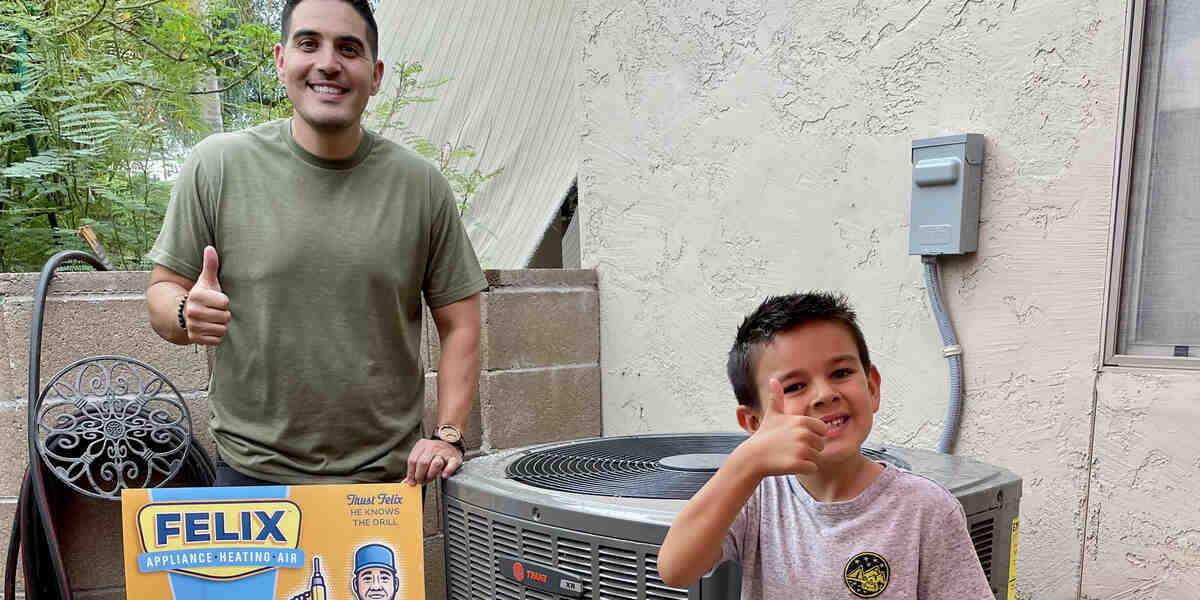How Does Temperature Transfer in an HVAC System
Is your HVAC system not heating or cooling the way it should? Call 480-406-7487 to speak to Maricopa’s air conditioning service today.
People around the world rely on their HVAC systems to keep their homes comfortable. Whether they need heating or cooling, contemporary HVAC systems can do each with ease.
However, many people don’t know how these systems work, asking questions like, “How does temperature transfer in an HVAC system?” Keep reading to learn how the modern HVAC system uses the power of heat transfer to cool and heat your home.

The Heat Exchanger
The heat exchanger is the most vital part of your HVAC system. It is responsible for more than just heating air. It also helps to keep your home cool.
Heat exchangers utilize the process of conduction, or how heat travels from one molecule to the next. This helps them transfer heat from one area to another. Using a system of fans, ducts, and coils, heat exchangers perform the fundamental tasks of heating and cooling your home. To understand how it works, you need to understand some basic science.
The Second Law of Thermodynamics says that thermal energy always transfers from high-temperature areas to low-temperature areas. The heat exchanger takes advantage of this principle and uses furnaces and refrigerants to adjust the temperature of air accordingly.
Although it may seem like your HVAC system just “makes” cold air, it does not. The heat exchanger and the laws of thermodynamics are responsible for keeping you cool.
Heating
There are two types of heat exchangers: gas and electric. In order to heat your home efficiently, heat exchangers must first capture cool air using a fan. Then, depending on your home’s connections, your HVAC system uses electricity or gas to heat the air. Finally, your system’s vents circulate the warm air throughout your home.
If you have a gas furnace, the heat exchanger has another job as well. In these types of systems, the heat exchanger is a sealed chamber with two holes in it. These holes are on the top and bottom of the unit and allow for the transfer of gases and air.
During conduction, gas furnaces produce harmful byproducts. The heat exchange prevents these gases from merging with clean air. It then sends harmful gases produced during conduction out the bottom hole, known as the flue. This way, the warm air going into your home is clean, and your family stays safe.
Cooling
Cooling your home requires a different process. First, the heat exchanger uses a fan to collect warm air. The air then travels across an evaporator coil full of refrigerant. The evaporator coil absorbs warm air and releases refrigerant as a gas. As a gas, the refrigerant circulates throughout your home to cool it off.
Like the heating process, the heat exchanger uses the transfer of gases to cool your home. The evaporator coils store refrigerant as a low-pressure liquid. It stays this way until it’s heated by incoming warm air. Once heated, the warm air converts the refrigerant into a low-pressure gas through conduction. The refrigerant then travels to the compressor, where it becomes a hot high-pressure gas. The compressor allows outside air to cool the refrigerant. The cycle is then performed again as needed.
How To Maintain a Heat Exchanger
Now that you have the answer to, “How does temperature transfer in an HVAC system?” it should seem like common sense to maintain your heat exchanger. Your HVAC’s heat exchanger is the heart of its system. Without it, your system would not be able to work properly.
Scheduling routine maintenance and inspections by an experienced HVAC technician is important. They can check this component of your system for damage or excessive wear and tear. Not only can you save money by catching problems early, but you can also extend the life of your system.
Routine maintenance will keep your HVAC system running at peak proficiency. When the unit is not struggling to heat or cool your home, it uses less energy, lowering your electric bills.
Contact Felix Appliance Repair Today
Your HVAC system needs to be fully functioning to maintain the temperature in your home. You can rely on Felix Appliance Repair to keep it running smoothly. Don’t wait until your home won’t stay cool due to a broken HVAC system; call 480-406-7487 now. We can help you schedule an inspection or ac maintenance. Have other questions besides, “How does temperature transfer in an HVAC system?” Our team of experienced technicians can answer any questions you may have.
